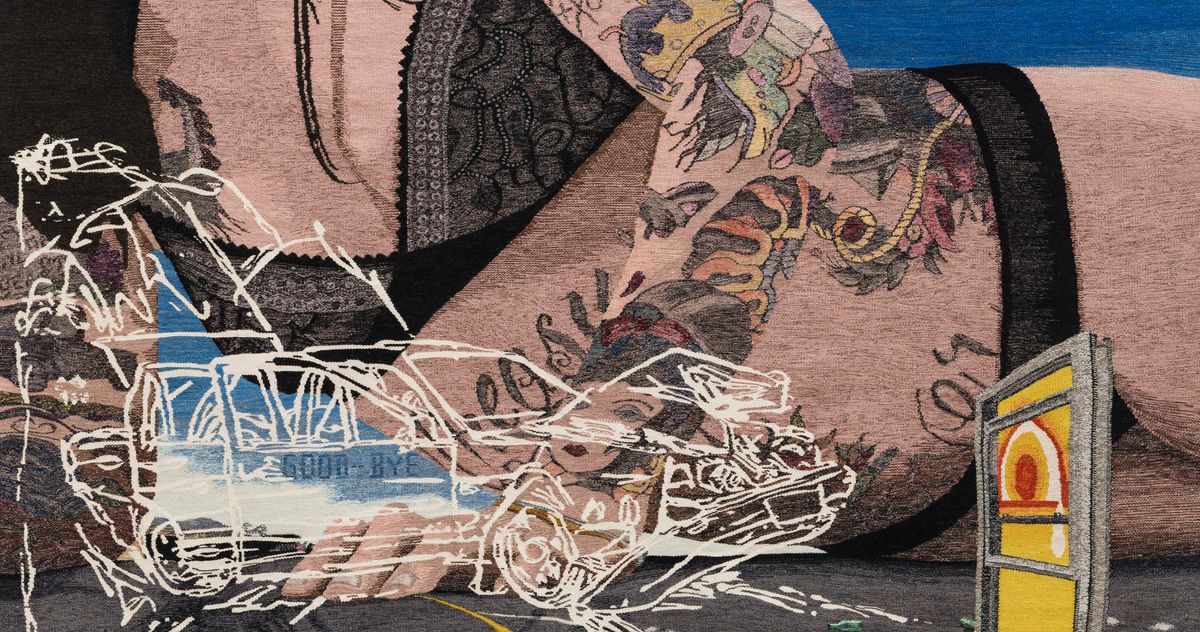
"The loom may be the most domestic of instruments, but in the hands of Erin M. Riley, it becomes a catalyst for chaos. Her tapestries recall crime scenes, vintage family photographs, OnlyFans accounts. Scenes from suburbia are overlaid with collaged fragments, text, and internet toolbars. The medium of weaving - ancient, laborious - feels apt for Riley's investigative project. This punishing process, thread by thread, inch by inch, keeps luridness from sinking into banality. What emerges isn't nostalgia but a luminous confrontation with the past."
"Selfies recur: Riley in bedrooms, in black underwear, tattooed skin. Innocent and provocative at once, these images expose how she sees herself as well as how others might. Childhood photos are also here, bearing the red time stamp from the 1990s and family members whose faces have been blotted out. A father holds her yet already seems absent. Birthday parties read as both ordinary snapshots and horror films. "I want to face my vulnerability, to share it," she told an interviewer in 2024. Her tapestries have the intimacy of Sylvia Plath poems crossed with forensic police reports."
Erin M. Riley uses traditional weaving to create large-scale, confrontational tapestries that merge crime-scene aesthetics, vintage family photographs, OnlyFans imagery, collaged fragments, text, and internet toolbars. The slow, laborious process—woven thread by thread—prevents luridness from becoming banal and produces luminous confrontations with the past. Recurring selfies and childhood snapshots reveal personal vulnerability, obscured family presences, and the ambiguity of memory. Hand-dyed remnants from shuttered mills and stitched-together panels scale intimate moments into vengeful, ambitious works. A recent exhibition centers domestic interiors and working-class Massachusetts histories as public, fragmented, and haunting tableaux.
Read at Vulture
Unable to calculate read time
Collection
[
|
...
]